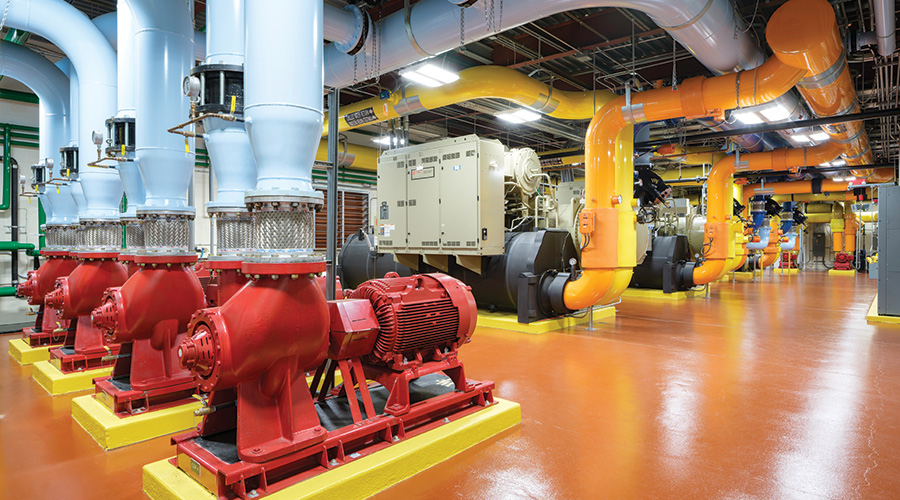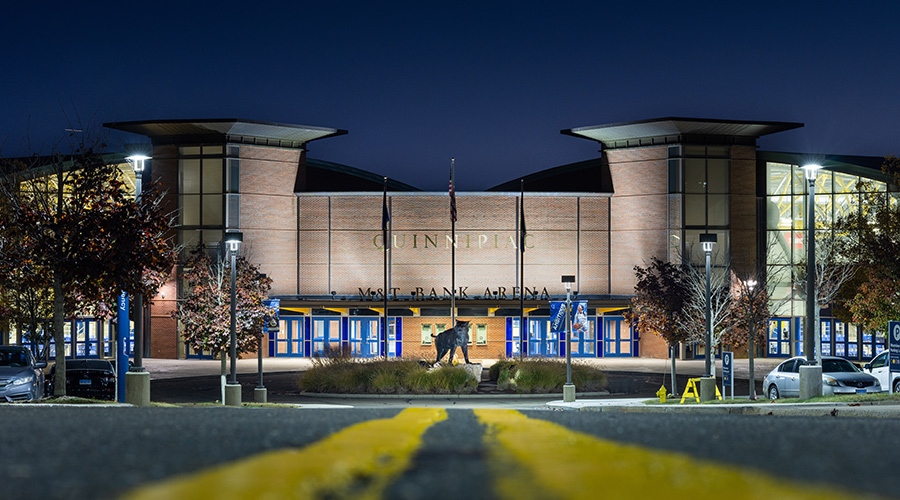Making Smart Building Design Work
By breaking down silos in facilities and improving communication among many interested parties, facility executives can ensure smart buildings perform as intended.
The rapid evolution of building automation system (BAS) technology is outpacing traditional design and construction practices for institutional and commercial facilities. The growing disconnects between the design process and the operation of buildings — increasingly, smart buildings — is preventing building owners and managers from benefitting fully from BAS technology to deliver benefits related to energy efficiency and sustainability.
A panel discussion at the recent AHR Expo in Orlando provided an opportunity to help attendees discuss failures and successes related to controls and building commissioning, designs that meet evolving expectations for building performance, and common barriers to achieving better outcomes in smart building projects. It also served as a reminder to facility executives and building managers of their critical role in ensuring the reliable performance of smart building technology.
New-generation guidance
BAS traditionally have been specified under Division 23, a subsection in the Construction Specification Institute MasterFormat used to align manufacturers and builders. One unfortunate result of using this approach is a siloed approach that creates barriers.
Technology advances have shaped the development of the Division 25 construction specification, which aims to eliminate traditional silos to better enable smart building design. Division 25 Integrated Automation provides integrated results and a technology infrastructure and assigns them to one technology partner responsible for delivery. In this approach, developers can help integrate various building systems effectively and intelligently.
The subsection defines contractual requirements of the building as to which products are acceptable, the functionality required and the materials and methods of installation. It provides the framework for coordinating, specifying and integrating smart building technologies, devices and software.
“We need to use integrated automation so that all these disciplines are involved in the integration process — lighting, energy, elevators,” said Greg Fitzpatrick, business development leader at Cochrane Supply and a former school district facilities manager. “They all point back to Division 25. They all point back to that systems integration drawing so each one of these disciplines know its roles and responsibilities in the integration process.”
An essential element of the integration process is a clear set of construction specification documents.
“What should be in a good set of documents?” Fitzpatrick asked. “A clear and concise specification that tells a story and assigns work. Not only that, a systems integration drawing must go from the (subcontractor) networks all the way back to the front end, or your web supervisor.
“We want to show all of that information on one drawing. You put as much as you can on the spec drawings and the rest of the specification. You don’t try to bury things in the specification. You want to put as much on the drawings as possible. Where are the routers? Where are the network management switches? Where are the edge switches if I have IP technology? How much technology is IP? Am I using some type of wireless BACnet solution?”
The traditional stumbling block to a smooth process for developing construction specification documents is bringing together separate yet related silos of information.
“In order to create that specification, you have to identify all the different components — all those silos that are involved,” Fitzgerald said. “It’s literally the Beatles of the design world because it’s the come together. That’s what brings everything together. We make cross-references in our Division 25 specification to everybody else’s specs.”
Unfortunately, he says, many construction specification documents have not been developed to successfully respond to the technology supporting smart buildings. One tool to overcome this issue is for designers to communicate with owners in order to understand their requirements for the project.
“That way, you’re prepared for integration,” he said. “You should be buying smart today so you can leverage the smart tomorrow. Then if I want to bring in a master systems integrator and do some type of integration later, at least you’ve got the core components. The stuff has to be bought correctly so you can facilitate that vision longer.”
Spotlight on silos
One key takeaway from the session is that clearer communication among designers, consulting engineers, system integrators and building owners and operators is an overlooked but critical component in breaking down silos and maximizing the potential of smart buildings. Too often, these groups fail to communicate well with each other, which keeps them from understanding each other’s technology needs and performance expectations.
Panelists emphasized the central role that operators and front-line technicians play in the successful, long-term performance of smart buildings.
“It’s important for owner-operators to start educating their facilities group and their operators on the technology,” Fitzpatrick said. “Teach them how that technology makes their job a little easier. It’s not about replacing them.”
Conversations with in-house facilities teams are also needed to help them understand the role other parties play in achieving long-term success.
“We meet with facilities folks, and we talk about operations and how we can help them,” said Dave Mulcahy, director of smart buildings at The Building People. “When I ask who’s doing the construction work, they often say, ‘That’s the construction team. We’re not involved with that.’
“You mean you’ve got somebody buying and spec-ing out stuff that you’re eventually going to have to support, and you have no input whatsoever on that? We’re going to work to close that gap.”
Mike MacMahon, intelligent buildings consultant at Newcomb & Boyd, said bridging the communication gap between facilities operations and other players in the process can pay important dividends.
“Facilities understands what they need and how they operate,” he said. “But the construction team may not understand that fully — what they have, the reduction in staff, the reduction in money, the ongoing operations that always cost money. There are ways to bring both of the groups together, and that’s what is needed more often is bridging those communication gaps and teaching people in the disparate groups how to talk to each other.”
Without clear communication, the final product — the finished smart building — is not likely to operate as efficiently as intended. MacMahon offered the example of a poorly designed fan motor box that prevented a technician from being able to change a filter.
“That couldn’t happen because the design team never thought that through to construction and to the operation and maintenance of the building,” he said. “It’s definitely very important to make sure that they’re interviewing and interacting with those teams so they understand what their needs are to see how we can change that upfront when we design the building.”
More effective communication also is essential for building owners to help operators understand how new-generation controls technology can benefit their facilities and organizations. That communication needs to take place on several different levels.
“There’s an aspect of facilities that is totally detached from the business side of the owner,” Fitzpatrick said. “For instance, cybersecurity. How much do the operators know when it comes to cybersecurity? Do they know that cybersecurity is important?
“Those are the things that we try to talk about with owner operators. Let’s get IT and facilities on the same page when it comes to cybersecurity. Let’s make sure that companies are doing training to get their facilities up to speed so they understand that you need the latest and greatest technology to operate energy efficient buildings.”
Fitzpatrick also emphasizes the need to educate architectural firms about advances in smart building technology.
“A lot of architectural firms who don't have full-service” mechanical, electrical and plumbing (MEP) expertise, Fitzpatrick said. “They rely on their MEP firms or their consultants they're hiring as their trusted advisor. They take for granted that they understand smart building technology. It all goes back to educating the MEP firms who are operating out there alone and making them understand what smart building technology is.”
Dan Hounsell is senior editor for the facilities market. He has more than 30 years of experience writing about facilities maintenance, engineering and management.
Related Topics:













